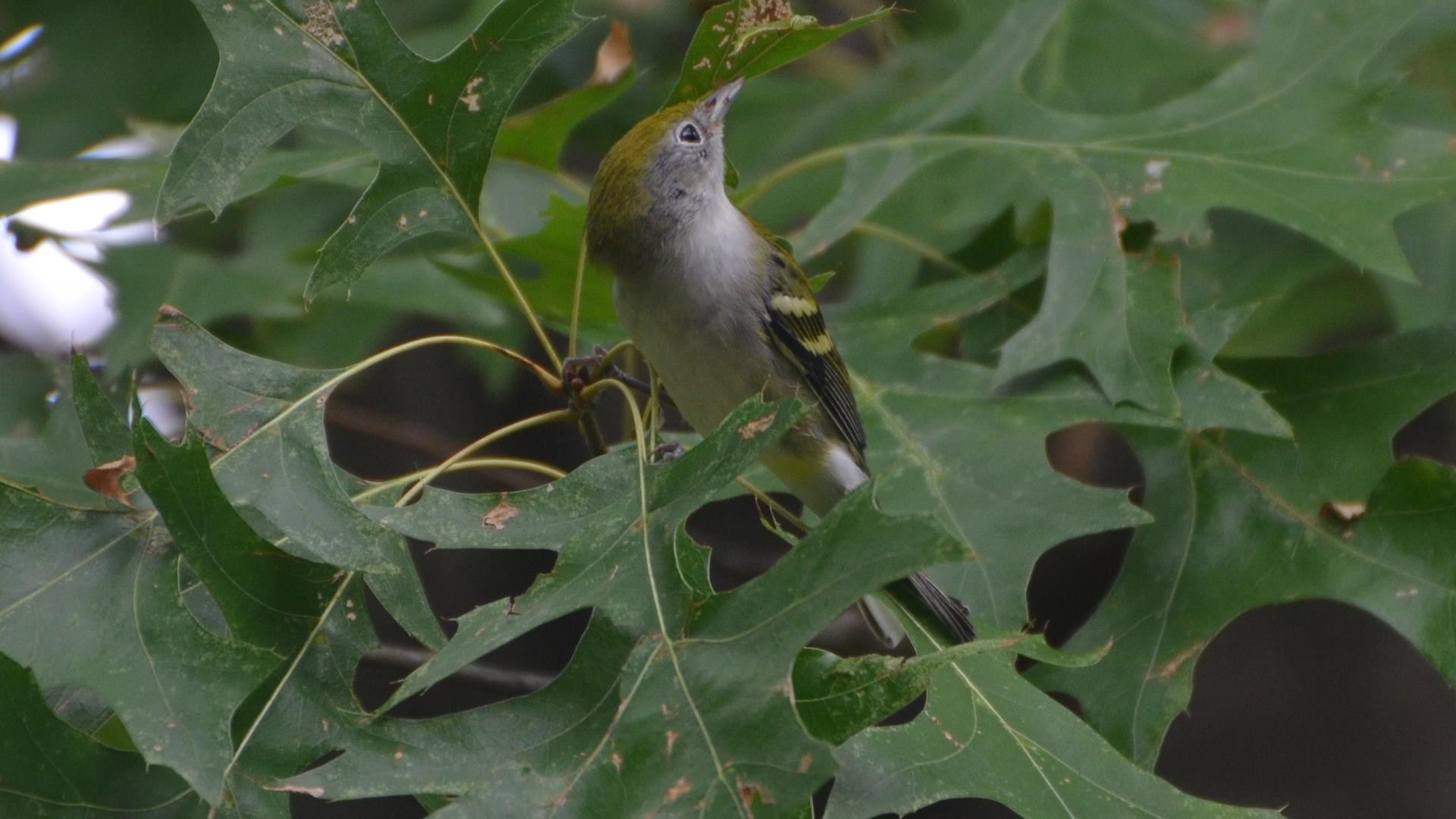Chestnut-sided Warbler
A species of Setophaga Warblers Scientific name : Setophaga pensylvanica Genus : Setophaga Warblers
Chestnut-sided Warbler, A species of Setophaga Warblers
Botanical name: Setophaga pensylvanica
Genus: Setophaga Warblers
 Photo By Andy Reago & Chrissy McClarren , used under CC-BY-2.0 /Cropped and compressed from original
Photo By Andy Reago & Chrissy McClarren , used under CC-BY-2.0 /Cropped and compressed from original Description
This species is a moderately-sized New World warbler. Despite having very different plumage, it is thought to be closely related to the widespread yellow warbler. In total, this species measures from 10 to 14 cm (3.9 to 5.5 in) in length and spans 16 to 21 cm (6.3 to 8.3 in) across the wings. Body weight ranges from 8 to 13.1 g (0.28 to 0.46 oz). Among standard measurements, the wing chord is 5.7 to 6.8 cm (2.2 to 2.7 in), the tail is 4.2 to 5.8 cm (1.7 to 2.3 in), the bill is 0.9 to 1 cm (0.35 to 0.39 in) and the tarsus is 1.7 to 1.9 cm (0.67 to 0.75 in). In the summer, male chestnut-sided warblers are unmistakable in appearance. They display dark-streaked gray backs, white faces, black eyestripes and greenish crowns. Their underparts are white, with chestnut flanks, and they also have two white wing bars. The adult females resemble washed-out versions of the summer male, and in particular, the females lack the strong head pattern, and also have little to no chestnut coloring on their flanks. Non-breeding birds of both sexes have greenish heads, and greenish upperparts which are usually unstreaked. They also have unstreaked pale grey breasts. Their wing bars are always present in their plumages. Their lack of streaking and greenish backs helps to distinguish this species from the larger blackpoll warbler in the fall. 
Size
13 cm
Colors
Brown
Black
Green
Yellow
Gray
White
Life Expectancy
7 years
Nest Placement
Shrub
Clutch Size
3 - 5 eggs
Incubation Period
1 - 2 broods
Number of Broods
11 - 12 days
Nestling Period
10 - 11 days
Feeding Habits
Chestnut-sided Warbler's diet primarily consists of insects such as caterpillars, fly larvae, spiders, locusts, cankerworms, and leafhoppers, predominantly foraged from the undersides of leaves in deciduous habitats. They exhibit active foraging behavior, frequently hopping to change perspective, and occasionally catch prey mid-air. Seeds and fruit complement their diet, with a notable winter consumption of berries from plants like Cymbopetalum mayanum.
Habitat
Chestnut-sided Warbler's habitat primarily includes young deciduous forests and scrublands, especially after disturbances such as logging or fires. These birds are found in regenerating thickets and varying landscapes, inhabiting lower elevations and sometimes higher Appalachian oak forests. They avoid urban environments and demonstrate adaptability across various wooded areas during migration. In tropical wintering grounds, their habitats encompass mature rainforests, shade-coffee plantations, and scrubby edges.
Nest Behavior
Chestnut-sided Warbler's nesting involves selecting a site in a crotch of small branches. The birds construct their nest in the understory, sometimes using ground vegetation like blackberry or alder. They lay eggs and provide parental care within this safe, low-to-the-ground habitat, though specifics on egg-laying patterns and timing are not detailed.
Nest Characteristics
Chestnut-sided Warbler's nest is a cup-shaped structure located fairly low in deciduous trees or shrubs, no more than 6 feet high. It is made of bark, weeds, grasses, plant down, finely lined with grasses, hair, sedges, and rootlets, and bound together with spider silk. The nest typically measures 2.8 inches in diameter and 2.6 inches high. The inner cup is about 2 inches across and 1.5 inches deep.
Dite type
Insectivorous
People often ask
Migration Overview
These birds are migratory, wintering in Central America south to northern Colombia, with an unconfirmed sighting from as far south as Ecuador; they are also very rare vagrants to western Europe. They arrive in their breeding range in May and depart by mid-September. 
General Info
Feeding Habits
Bird food type
Bird Feeder Type

Platform
Sounds
Call
Recording location: Panama
Song
Recording location: United States
Behavior
Chestnut-sided Warbler engage in monogamous relationships, with males performing elaborate courtship displays involving feather vibrations and acrobatics. Their day consists of foraging, often holding tails upward, and territory defense, with males responding aggressively to rivals by fluffing chestnut-colored flanks and calling. Female chestnut-sided Warbler build nests and repel other females post-hatch. In winter, chestnut-sided Warbler may defend feeding territories or join mixed-species flocks, showing varied social behaviors depending on location.
Species Status
Not globally threatened.

 Photo By Andy Reago & Chrissy McClarren , used under CC-BY-2.0 /Cropped and compressed from original
Photo By Andy Reago & Chrissy McClarren , used under CC-BY-2.0 /Cropped and compressed from original Scientific Classification
Phylum
Chordates Class
Birds Order
Perching birds Family
New world warblers Genus
Setophaga Warblers Species
Chestnut-sided Warbler